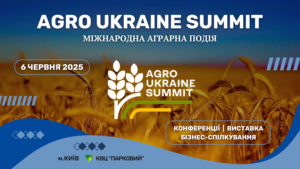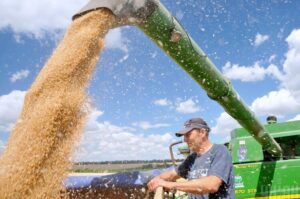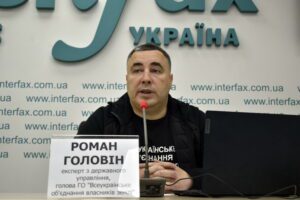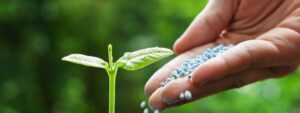
More than 8 thousand agricultural companies have been opened in Ukraine since 2021, according to the Unified State Register. The peak occurred a year before the full-scale invasion, when 2678 agribusinesses opened in a year. At the same time, another 3.4 thousand companies ceased operations from 2021 to 2025. Most often, agribusinesses are started in Odesa, Kyiv, and Lviv regions. More than 346 companies relocated to the western regions during this time.
8,644 agricultural companies have been registered in Ukraine since 2021. The most active year was 2021, when 2,678 companies were registered. With the start of the full-scale invasion, the number of registrations dropped to 1,558. However, in 2023, the agricultural sector revived: 1,697 new companies were registered in a year. 869 new agricultural enterprises have already been registered this year.
At the same time, 3,416 agricultural enterprises closed in Ukraine from 2021 to 2025. The largest number of closures occurred in 2021 (1,070 companies) and in 2024 (685). This year, 536 agricultural companies decided to cease their operations.
The largest number of new agricultural companies was recorded in Odesa region – 612. This is followed by Kyiv (600), Lviv region (597), Vinnytsia (591), and Dnipropetrovs’k region (535). The lowest number is in the frontline Luhansk region (40), Donetsk (101), and Zaporizhzhia (147). However, agrarians in Chernivtsi (120) and Zakarpattia (171) regions are not very active in opening their businesses.
Most agricultural companies closed in Odesa region – 606. There are also a lot of closures in Dnipropetrovska (225), Khmelnytska (201), Kyivska (199), and Mykolaivska (191) regions. The lowest number of closures was in Luhansk (21), Donetsk (49), Ivano-Frankivsk (49), and Kyiv (55).
1738 agricultural companies relocated to other regions during this period. Of these, 346 agribusinesses moved to the western regions of Ukraine over the past 5 years. Almost half of the relocators who decided to move to the west chose Lviv region as a new business location – 166 companies. Rivne region (54 companies), Volyn (39), Khmelnytsky (30), and Zakarpattia (19) are also in demand among businesses that change their residence.
Some agricultural companies that have opened during this time are steadily increasing their fortunes.
● Farmzaat Ukraine – in 2024, the company’s revenue grew 3.3 times and reached UAH 770 million
Niva-Plus – last year the company earned UAH 530 million, which is one and a half times more than in 2023.
● Agropromtekhnika – revenue grew 2.7 times year-on-year to UAH 392 million
Krasnopavlivskyi CPP – UAH 308 million, up 1.3 times compared to 2023
● Malynivska Agrofirm – the company’s revenue grew 2.8 times over the year to UAH 299 million
https://opendatabot.ua/analytics/agro-in-war




On June 6, 2025, Agro Ukraine Summit will take place, a major international agricultural event that will bring together all key stakeholders in Ukraine’s agricultural and food sectors.
The summit aims to identify current challenges and opportunities for the development of the agricultural sector, discuss ways of integration into the EU, and formulate a vision of Ukraine’s agri-food future.
Venue: 16a Parkova Road, Kyiv, CEC “Parkovy”
For whom the event is intended: crop and livestock producers, elevators, agro-processors, logisticians, traders and all companies providing equipment, technologies and services to the relevant industries.
Number of participants: 2500+
The Summit will include:
6 conferences:
– “Agro Ukraine Summit” conference
– Conference “AgriTech Conference”
– Conference “Futurology or the future of grain storage”
– Conference “Effective livestock and poultry farming”
– Conference “Processing trends in crop production”
– Conference “Solar Agro Conference”
Presentations by industry experts with cases of effective agribusiness, government officials and experts;
Exhibition of technological solutions and equipment from leading manufacturers (100+ stands);
Live music, lounge area;
Coffee breaks, receptions.
For more information, please visit the official website: https://agro-ukraine-summit.com
For partnership and participation in the exhibition, please contact the organizers:
+38 096 899 4272 | +38 067 243 3803 | proagro-inform@ukr.net
Interfax-Ukraine is the official media partner of the event.

Hungarian Minister of Agriculture Istvan Nagy is not satisfied with the work of European solidarity corridors and believes that the expansion of the traditional maritime transport route, which now takes only 12% of Ukrainian agricultural products, will help to reduce the pressure on domestic markets of the EU.
“The current solidarity routes are not fulfilling their role, as the products remain in Ukraine’s neighboring countries. We used to have 40-50 thousand tons of grain, now we have 2.5 million tons. The purpose is to expand the traditional sea transport route, by which now only 12% of Ukrainian products leave. This will reduce the load on the land route and reduce the pressure on EU domestic markets,” the Hungarian Ministry of Agriculture quoted him as saying at a press conference with his Polish counterpart Robert Telusz in Warsaw on Thursday.
Nagy said he had asked his Polish counterpart for a mandate to negotiate with the Turkish side to open new sea routes for grain exports in addition to the existing three Black Sea ports.
He called it important to maintain and expand cooperation among the five EU member states. “We are determined to continue to cooperate (…) to find a common European solution to this problem; it is an important humanitarian and solidarity goal,” the Hungarian minister stressed.
Nagy praised the joint actions of the five EU member states – Bulgaria, Romania and Slovakia, as well as Poland and Hungary – in suspending imports of Ukrainian grain. Thanks to the joint implementation of the will “today we can protect our borders and farmers as a result of measures of the European Union, not national measures,” he said, and expressed regret that the restrictive measures are valid only until September 15.
Hungarian and Polish ministers stated that the restriction period until Sept. 15 was too short. “For example, the corn harvest will still be going on, so we definitely need to push for the extension (of restrictive measures – IF),” Nagy said.
Polish Minister of Agriculture Robert Telusz called important the Hungarian initiative to expand the Black Sea Route, which he said Warsaw would support. At the same time, he stressed the need for the development of land transport routes.
Telusz praised the merits of the Hungarian side in the creation of the five-member coalition on the grain issue. He noted that without the actions of this association the European Commission “would not have seen the problem at all”.
The Polish minister also stressed the importance of maintaining this alliance. “Together we can fight not only for issues important to our countries, but also for the future of Europe,” he said.
According to him, after the war is over, the process of Ukraine’s integration into the European Union can continue, and with it, “the issue of Ukrainian products will come up again.” “If today we do not make the European Commission develop real tools to solve this problem, the problem will have unpleasant consequences,” Telusz said.
He also said that he agreed with his Hungarian colleague to organize a meeting with Ukrainian Minister of Agrarian Policy and Food Nicholas Solsky to find common solutions to solve the problem of grain imports.

The concentration of land in one hand by leasing land plots from their owners over the years of independence has led to the degradation of the Ukrainian agricultural industry, this problem can be solved by legally operating associations of landowners, consolidating in matters of growing and selling crops, head of the Ukrainian Association of Land Owners Roman Holovin said.

At a press conference at the Interfax-Ukraine agency on Thursday, he noted that the main problem of land lease relations in Ukraine is the concentration of land in one hand. Thus, 10% of the country’s agricultural land is concentrated in the ten largest Ukrainian tenants.
In addition, the user of the land, who is not its owner, is not interested in investing in the land asset, as well as in the further processing of agricultural products and the development of animal husbandry, the expert explains.
Holovin specified that the launch of the land market in 2021 did not change the situation for the better for the land owner, but continued the concentration of land in the hands of tenants. With its appearance, the rent for agricultural plots did not increase, the owner of the land did not receive the right to dispose of the land without the permission of the tenant, and the lease agreement is almost impossible to terminate. According to the expert, due to lack of prospects and intimidation by tenants, land owners are increasingly deciding to sell land for next to nothing.
“Ukraine found itself in a situation of a dead end in the implementation of land relations, which led to the decline of the agricultural sector, gave rise to socio-economic and socio-political contradictions and conflicts. Such land relations do not exist in any civilized country,” the head of the union emphasized during the press conference.
Holovin noted that associations of land owners are capable of resolving this issue, which consolidate joint efforts to sell their crops at the highest possible price, resolve the issues of production services and hiring subcontractors, accounting and tax administration. Such public independent management of land through participation in the community of land owners created by Holovin makes it possible to receive profit from the use of land by its owner 2-2.5 times more than non-public (shadow) agriculture, or management through the registration of the land owner as a private entrepreneur.
The community of land owners is a legal entity created by uniting land owners to consolidate the use of land plots in independent agricultural activities, at the same time socially significant for its participants, the society and the state as a whole. The organization is a single taxpayer of the fourth group and a value added tax payer, which implies a special taxation regime for the community and the owner of the land entering it.
“The community does not pay income tax, which means that the owner of the land does not pay it either. The land owner participating in the community does not pay the minimum tax liability (UAH 1,500-2,000 per ha of land), land tax (UAH 300-600 per ha), personal income tax (UAH 2,000-8,000 per ha of land) in the form of a tax liability and does not pay social security tax (22% of income received),” the expert specified.
At the same time, he clarified that community members have the opportunity to sell their crops at market value with VAT refunds, while individual farmers who grow agricultural products without state registration are forced to sell them 40-50% cheaper due to the lack of documents confirming their ownership of the crop.
Also, the community has the right to VAT refunds on the purchase of goods and services, pays a single tax in the amount of 0.95% of the normative monetary value of the cultivated land. In addition, it maintains personal accounting records for each participant, which means accounting for personal expenses and personal profits.
According to Holovin, the above tax and administrative preferences allow a land owner who independently cultivates land through participation in the community to have a significant advantage over illegal land owners and landlords. This way of managing allows him to receive an average of UAH 12,000-20,000 of profit per hectare of land.
According to his calculations, with a crop value of UAH 28,000/ha, the land owner can receive UAH 8,000-12,000 per hectare by optimizing taxation and accounting, and with a crop value of UAH 42,000/ha, he will earn UAH 14,000-22,000/ha.
“In the system of self-management, the income of millions of land owners is significantly increased, control of the agricultural sector and its centralized support are ensured, and most importantly, the country’s food security is guaranteed,” he summed up.
Virtual reality: to what extent does technology affect the success of a grower?
Date December 2, 2021 (Thursday)
Time 14:00
Link
Technology has changed dramatically over the last twenty years. Thanks to its rapid development, we explore, interact, buy and live differently. Agriculture is no exception. Growers can no longer work without satellites, drones and artificial intelligence. Technologies that help to collect data are becoming very important. However, perception of modern agriculture can be quite different – from a small farmer in a cab of old tractor to highly mechanized operations full of tractors and thousands of hectares. Sometimes it may seem that only high-tech farms use digital technology. But this is not quite true. Similar to how everyone on the planet uses smartphones, growers protect their crops with digital technology. But can digitalization really transform agriculture? Can a farmer grow more using less?
This is what we will discuss on December 2 during the panel discussion “Transformation of Agriculture through Digital Technology”:
These and other important topics our participants will be discussing during the panel discussion:
Moderator: Oleg Nivievskyi, Assistant Professor/Center for Food and Land Use Research at Kyiv School of Economics
Partner: Bayer.

Public associations of farmers are asking the government to consider the possibility of providing chemical enterprises with a commodity loan for 1.25 billion cubic meters of natural gas for the production of mineral fertilizers, this will avoid a shortage of fertilizers and “unrestrained price increases” for them next spring.The corresponding appeal of the Ukrainian Agribusiness Club (UAC), the Agrarian Union of Ukraine, the Federation of Employers, the Union of Chemists of Ukraine, the Ukrainian League of Industrialists and Entrepreneurs, the Council of Entrepreneurs under the Cabinet of Ministers of Ukraine, the Ukrainian Agri Council and the Ukrainian Agrarian confederation to Prime Minister Denys Shmyhal was published on the UAC’s website.As stated in the appeal, over the past month, most of the major European producers of nitrogen mineral fertilizers have reduced production due to a sharp rise in prices for natural gas, which leads to a shortage of mineral fertilizers in the European and world markets.According to UAC, Ukraine meets the needs for mineral fertilizers mainly due to domestic production, while in order to provide the country’s sowing campaign, 2.3 million tonnes of fertilizers are needed for the period of November 2021-May 2022, of which 75% is expected from domestic production and 25% – from import supplies.In such conditions, an important component of providing Ukrainian farmers with nitrogen fertilizers is the stable and uninterrupted operation of domestic producers, primarily in the winter period, when their stock is formed for the spring sowing campaign and feeding winter crops. In turn, this can be achieved only if there is a necessary supply of natural gas, the main raw material for the chemical industry at a stable price.The associations in their appeal suggested that the government consider the possibility of allocating a commodity loan for 1.25 billion cubic meters of natural gas to domestic producers of nitrogen fertilizers for the period from November 2021 to April 2022 at the expense of the reserves of NJSC Naftogaz Ukrainy.